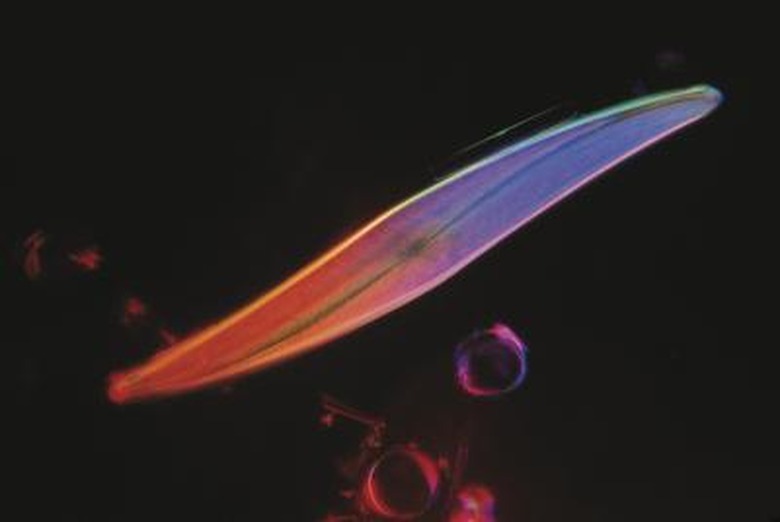What Is Difference Between Zeolite & Diatomaceous Earth?
As the natural or organic movement gains popularity in America, more people are turning to natural products. Zeolite and diatomaceous earth are natural minerals and fossils that can be used in a variety of products, including water softeners, filtration systems and even insect repellent. However, zeolite and diatomaceous earth have different functions and should be handled with caution, because if inhaled they might cause internal damage.
Origins
Origins
Diatomaceous earth, also known as DE, is a fossil that consists of thousands of single-celled organisms known as diatoms. These diatoms are prehistoric and could be found in fresh and salt water. Zeolite is a mineral that usually contains aluminum, silicon and oxygen. At the basic chemical level, it is a mineral whose molecules form a very rigid crystal structure.
Characteristics of DE
Characteristics of DE
DE is a very porous material at the microscopic level, which allows it to be an excellent natural filter for swimming pools, and it's a natural insect repellent. When crushed, DE is an anti-caking agent used in many foods such as flour and grains to prevent them from sticking together and keep insects at bay.
Characteristics of Zeolite
Characteristics of Zeolite
Zeolite can exchange its metal ions for other metal ions when it is submerged in water. It's used in washing powders and water softeners, because it can release sodium and potassium in exchange for calcium and magnesium.
Benefits
Benefits
Zeolite can reduce the need for dangerous liquid acids in a chemical product because it's a natural catalyst that can help break down the heavy metal chemicals in an aqueous product. DE is a very porous mineral that can absorb dangerous chemicals, and it can scrape the outer shells of insects, eventually killing them.
Types
Types
There are over 50 types of zeolite, each with a different function and size. They all can exchange one cation in its chemical makeup for another cation. There are two main types of DE. One is derived from saltwater sources, and the other is derived from freshwater sources. The DE derived from a freshwater source is considered "food grade" by the U.S. Department of Agriculture.
Cite This Article
MLA
Franco, Atanacia. "What Is Difference Between Zeolite & Diatomaceous Earth?" sciencing.com, https://www.sciencing.com/difference-between-zeolite-diatomaceous-earth-6500622/. 24 April 2017.
APA
Franco, Atanacia. (2017, April 24). What Is Difference Between Zeolite & Diatomaceous Earth?. sciencing.com. Retrieved from https://www.sciencing.com/difference-between-zeolite-diatomaceous-earth-6500622/
Chicago
Franco, Atanacia. What Is Difference Between Zeolite & Diatomaceous Earth? last modified March 24, 2022. https://www.sciencing.com/difference-between-zeolite-diatomaceous-earth-6500622/
